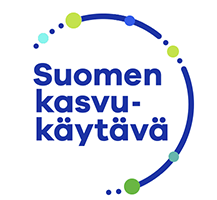Ajankohtaista
-
When is the FET method a useful tool?
The FET (Fast ExpertTteams) working model is an innovative method that was developed at LUT University to respond to the changes and challenges brought about by the Covid-19 pandemic.
The Finnish Growth Corridor, together with Humap, organized a trial of the FET working model to find solutions to the skills shortage and lack of talent, which is one of the main factors slowing down business growth. The focus chosen was to address the complex issue of retaining international students in Finland.
The trial of the working model took place in February-March 2023 and approximately 45 experts participated in it.
The results of the FET process have been published already, but we also wanted to examine the working model itself. Is the FET working model a useful tool in the future as well, and if so, in what kind of situations?
We set out to find answers to these questions by interviewing some of the participants.

What is FET?
Fast Expert Teams (FET) refers to a temporary expert team that has been brought together to solve a challenging task across professional and organizational boundaries for a limited time.
In the FET approach, experts are brought together to solve a specific challenge or task, because they have the necessary knowledge or experiential insight.
The work takes place during approximately five weeks through digital collaboration, and each participant commits to using 10-15 hours of working time during this time.
Benefits
Most of the participants were satisfied and felt that they learned a lot from the process. "The experience was inspiring and positive. It was a well-structured and goal-oriented way of working and the meetings were pleasant. The best part was our excellent group – we were all strangers before the process and we learned a lot from each other." says community manager Sari Rautio.
Project manager Heikki Hauskaviita also shared the same experience: "I found teamwork rewarding and refreshing. For us, a relaxed and conversational way of working worked the best. I learned a lot from other people's experiences and got information about experiments and work that had been done in other regions."
The working model also worked well bilingually. "Overall my experience was good.
The communication was good, the Howspace platform was really professional, and my favorite part was how we used both Finnish and English for inclusivity. That was a good example of how to deal with the language barrier", says career coordinator Eszter Kiss from Haaga-Helia University of Applied Sciences.
FET working was also found to be a good networking and influencing opportunity. "I like the systemic way of working, where the target groups and experts are heard and can network – not always just the managers and other decision-makers." says Senior Policy Advisor in Internationalisation Sandra Slotte from Arcada University of Applied Sciences.Challenges
The method also presented some challenges. For example, some participants were surprised how time-consuming the work actually was. “I was not aware of how much time the process would take when we started. It was not only the meetings for 6 weeks, but we needed to allocate time for the group as well weekly. This ends up to be a considerable amount of work and time, basically a side project for 6 weeks, which doesn’t work out if someone is already busy at work." Kiss says.
Having diversity is also very important in order for the process to succeed. Without diversity, comprehensive solutions cannot be found. "It was great that we got several international students, representatives of educational institutions, and public sector actors to join us. However, there should have been more entrepreneurs, as their participation and point of view is essential in solving the skill and talent gap issue," says network coordinator Miia Antin from Finland's Growth Corridor.
Many participants also wished that more international students would have participated as well. "This way of working only works if the target group is genuinely and extensively involved in developing solutions themselves. Not in a way where others are trying to solve the problem without them.” says Slotte.
The group dynamics of expert groups also play a significant role in the success of the work. "It's good to have facilitation and to have the framework together, but each team eventually forms its own way of working – or doesn't . Finding inner motivation is important, but it often depends on chance, and you can't always find it even if you try hard." Hauskaviita adds.
Conclusion
After the experiment, we can conclude that FET working is an excellent tool that can be used both in regional development in general and in solving individual challenges. The FET working model is well-suited to complex challenges that require multiple perspectives, and is suitable for conceptualizing and defining complex issues that are difficult to approach.
However, in order to work successfully and to find concrete solutions, the topic must be clearly defined and certain conditions must be met.
It is necessary, for example, that the participants are committed and prepared for the process in advance, so that they set aside enough time in their calendar for it. Ensuring diverse views, and involving the target group of the challenges to be solved, before starting work is also absolutely important. We also learned that it is very important to clarify to the participants before the process what and how the information obtained from the process will be used in the future.
The FET organizational model is best suited to situations where working can be a part of an expert's working time, when the expert group consists of people in a similar work/career situation, and when different groups are strongly represented in order to obtain versatile perspectives.
We are looking forward to further utilizing and developing the FET working model.
Tagit: blogi inEnglish Takaisin







